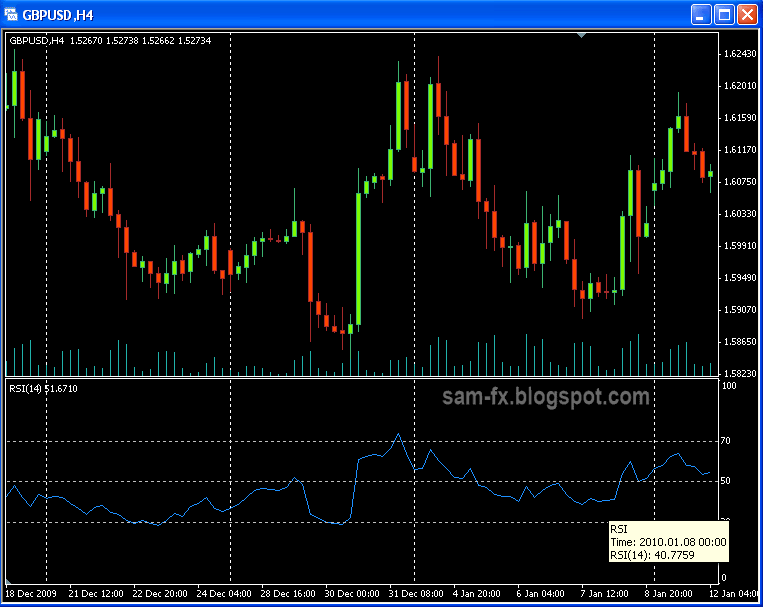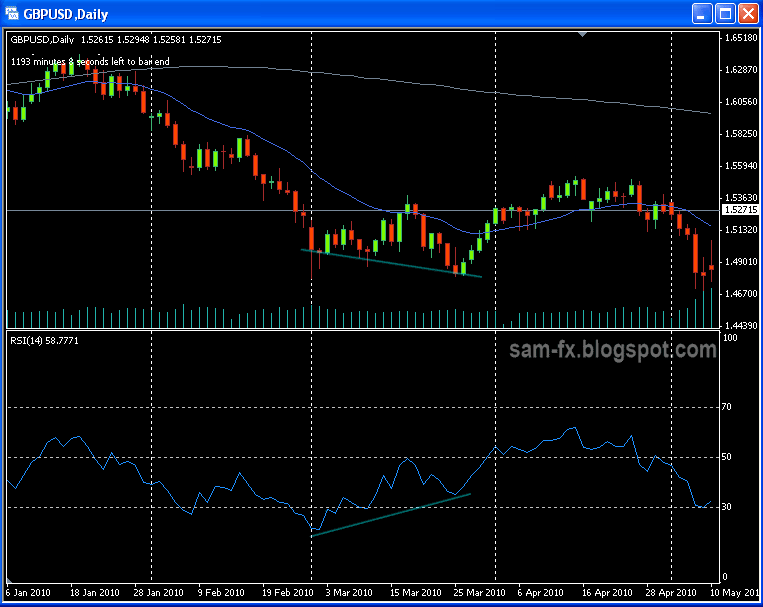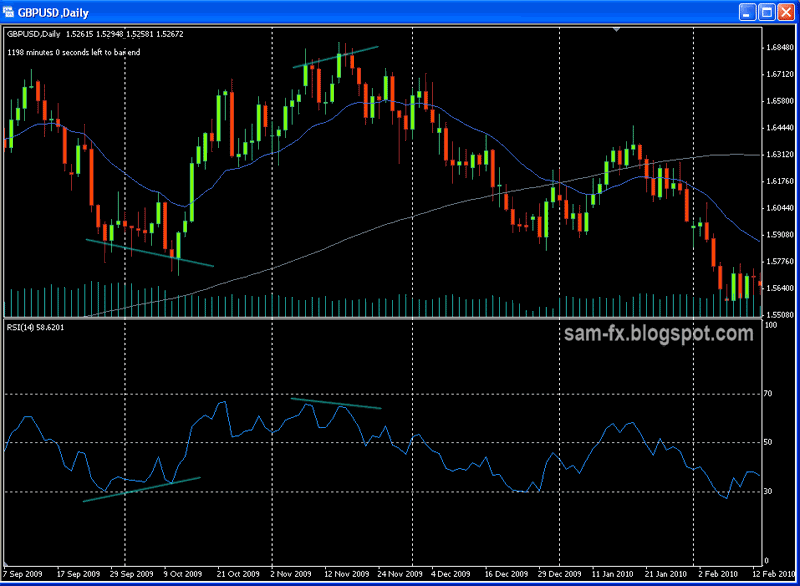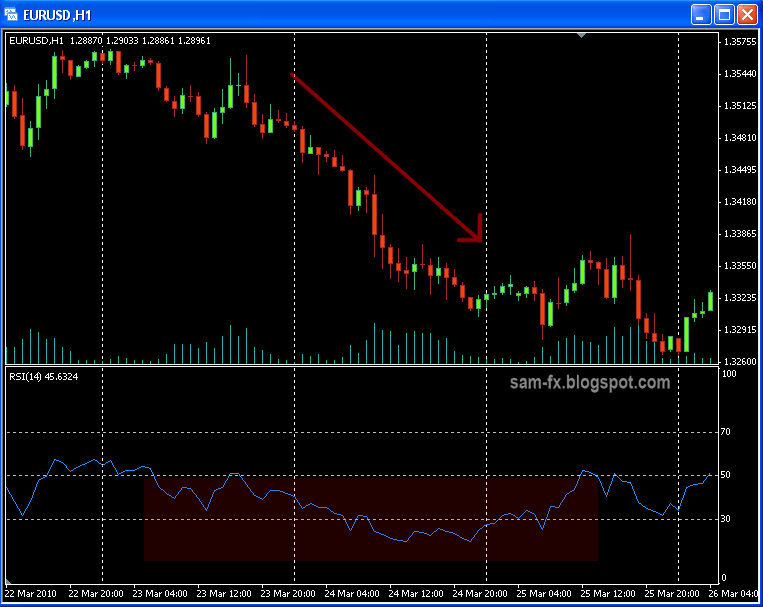Relative Strength Index (RSI), another momentum indicator which is one of the most indicators for traders. RSI developed by J. Welles Wilder at 1978. It measures the relative strength within the price low and high over a period of time. I often used this together with other indicator such as stochastic for double confirmation. When I first learn Forex I thought RSI just a matter of observing the 30 and 70 levels only, however there are more to it when I learn it deeper. Here I would share more about RSI.
RSI indicator move around between level 0 and 100. It is calculated by the average gain and loss of a price. It is price based indicator, as opposed t o Money Flow Index (MFI) which is volume based indicator. The formula for RSI is beyond the discussion here. There are many different formulas out there, but this one i found at stockcharts.com is the most accurate one. (http://stockcharts.com/school/doku.php?id=chart_school:technical_indicators:relative_strength_index_rsi)
This is how RSI indicator looks like
Welles recommends the period to be 14, but it can be changed based on traders preference. Besides 14, the most popular period being used is 9 and 25. Lower the period will result in more oscillation, but also increase chances of false signal.
Overbought / Oversold
RSI oscillate between 0 and 100. When the level is over 70, it is considered overbought. When the level is below 30, it is consider oversold.
Traders often take it as short signal when RSI is over 70 and long signal when RSI is below 30. This is not always right things to do because in strong trend, RSI will stay in the oversold/overbought territory for some time. Usually check with candlestick patterns and confirmations with other indicators are needed to make the trade. When RSI move out from overbought/oversold territory, it is good signal to enter.
Divergence
Divergence is another way to use RSI. When price makes a higher high but RSI fail to make a higher high, a reversal is near. When price making a lower low but RSI makes a higher low, a reversal is possible too.
Note that in strong trend, divergences are misleading. In my opinion, RSI shows more misleading divergence compared to stochastic.
Overbought / Oversold
RSI oscillate between 0 and 100. When the level is over 70, it is considered overbought. When the level is below 30, it is consider oversold.
Traders often take it as short signal when RSI is over 70 and long signal when RSI is below 30. This is not always right things to do because in strong trend, RSI will stay in the oversold/overbought territory for some time. Usually check with candlestick patterns and confirmations with other indicators are needed to make the trade. When RSI move out from overbought/oversold territory, it is good signal to enter.
Divergence
Divergence is another way to use RSI. When price makes a higher high but RSI fail to make a higher high, a reversal is near. When price making a lower low but RSI makes a higher low, a reversal is possible too.
Note that in strong trend, divergences are misleading. In my opinion, RSI shows more misleading divergence compared to stochastic.
The price is making a new low, but the RSI is making higher low.
Another view of divergence
Centre line crossover
The level 50 line is good area to determine bullish and bearish trend. When RSI fall below 50, the bear is stronger, when RSI rise above 50, the bull is stronger. On a moving trend, RSI crosses the 50 level is a confirmation of trend movement.
The level 50 line is good area to determine bullish and bearish trend. When RSI fall below 50, the bear is stronger, when RSI rise above 50, the bull is stronger. On a moving trend, RSI crosses the 50 level is a confirmation of trend movement.
Bearish center line cross over
Bearish center line cross over
RSI trend line
Another way to use RSI is drawing trend line at RSI indicator itself. Similar to trend line trading, but the line is drawn on the RSI signal line. This is useful because reversal on the trend line often seen earlier in RSI then at the price chart.
Another way to use RSI is drawing trend line at RSI indicator itself. Similar to trend line trading, but the line is drawn on the RSI signal line. This is useful because reversal on the trend line often seen earlier in RSI then at the price chart.
RSI trend line. Not always easily visible
Failure swings
Failure swing is not related to price chart. A bullish failure swing is when RSI dip below 30, bounce up, then down again, and when the line cross the previous height, this is failure swing. The opposite happens for bearish failure swing. Failure swing is a good signal on possible reversal of the trend.
Unlike the stochastic, signals in RSI are rare and harder to spot. But once they appear, it can be very significant. Use it wisely and it may bring you many profitable trade.

 n
n



